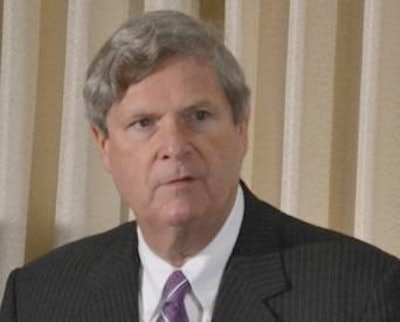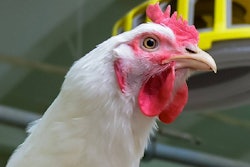
Avian influenza is likely to resurface in the United States in the fall, and U.S. Agriculture Secretary Tom Vilsack discussed ways to prepare for its return while speaking at “Avian Influenza Outbreak … Lessons Learned” Conference held July 28-29, in Des Moines, Iowa.
“Two hundred and thirty-two enterprises and operations have been hit by avian influenza since early spring with nearly 50 million birds depopulated. This has caused USDA to reach out to almost 3,000 additional workers for APHIS. We have expended, or likely will expend, in excess of $700 million dollars in the form of indemnification payments to producers, as well as the reasonable cost of disinfection and clean-up. We expect, and anticipate, that should avian influenza reemerge in the fall, that number may obviously grow,” said Vilsack
As part of his speech, Vilsack discussed preparing for the fall season. He focused on collaborating with the poultry industry and state and local governments, as well as on the need for the best biosecurity possible, incident command structures, the vaccination and indemnification process, and better communications among all parties. Vilsack remarked, “Obviously, the best biosecurity job may not be good enough. There may well be a reemergence; and if there is, we will be dealing again with the issue of depopulation.”
Avian influenza’s impact on Iowa egg industry huge, governor says
Iowa Governor Terry Branstad spoke on the impact of avian influenza on the industry. He observed that the spring avian influenza outbreak was the worst animal disease outbreak in modern U.S. agricultural history, with the largest economic impact and the largest number of animals affected. Govenor Branstad remarked that Iowa was one of the states hit hardest by the outbreak, commenting that “according to USDA’s latest egg production report, Iowa egg production in June was down 44 percent from one year ago.”
Avian flu a global problem
In his presentation titled, “H5N2 Outbreak: Where Are We…Where We Are Going,” Dr. John Clifford, chief veterinary officer for USDA APHIS, observed that avian influenza is a world-wide issue. He stressed the need to address issues in other parts of the world as they arise or be faced with continuing to have these types of introductions, or risk of introductions, in the U.S. and around the world. Dr. Clifford also shared lessons learned regarding disposal and cleaning and disinfection methods as a result of the spring avian influenza outbreak, as well as discussed the results of the completed USDA epidemiology avian influenza report.
Prevention and containment efforts shared
Rick Huisinga, CEO of Life-Science Innovations for Willmar Poultry Company, and J.T. Dean, COO for Center Fresh Group, were two of four participants in a “Producer Panel: Lessons Learned” discussion. Huisinga shared what Willmar Poultry learned as a result of the avian influenza outbreak, including older birds being more susceptible and delaying depopulation as being disastrous. Huisinga also discussed prevention methods that included not growing commercial toms near breeder farms, biofiltering incoming air on their high value birds and pre-moving PCR water testing.
Dean observed that the Center Fresh Group of companies was able to keep the virus contained to eight of their sites. However, this still resulted in a loss of approximately 9 million birds. Dean remarked that the biggest takeaway that he could provide would be to plan, commenting that “prior planning prevents poor performance.” He discussed the need to have a robust biosecurity program, disposal plan, adequate supplies, defined leadership and chain of command, state/federal contact information, and a plan for continuity of clean operations.
The conference agenda was developed through the collaboration of USPOULTRY, National Chicken Council, National Turkey Federation, United Egg Producers, USA Poultry & Egg Export Council, and the U.S. Department of Agriculture.

















